Many journalists, at some point in their careers, have had an “Ah-hah!” moment -- a sudden realization about the impact of their work or the work of their colleagues. Many of the journalists interviewed for the WNN report provided a single anecdote about an event that helped them understand and appreciate the power and purpose of journalism. We are sharing those epiphanies here.
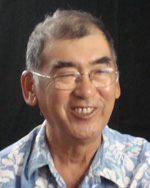 |
Dennis Fujimoto
Photographer / Reporter / Columnist, The Garden Island
Lihue, HI
Dennis Fujimoto began his professional journalism career shooting photos for TV Guide. To conquer his timidity, a veteran reporter taught him to remember he was just as good as his subjects when he shot their pictures. Then he turned that around, and he learned to treat everyone he shot as if they were a “cover person” – an attitude that acknowledges the abiding impact of putting a picture in the paper. |
 |
Richard Stein
Graphics / IT / Web Supervisor, The Garden Island
Lihue, HI
Richard Stein experienced a special dimension of journalism’s power in a rodeo ring in Pendleton, Ore. He was videotaping the annual rodeo for his newspaper’s website when he realized he was an eyewitness to once-in-a -lifetime events -- events he could share with his community through journalism. |
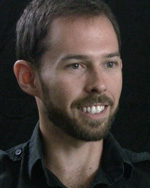 |
Nathan Eagle
Managing Editor, The Garden Island
Lihue, HI
Nathan Eagle learned one of his first key lessons about journalism when he wrote a story for his high school newspaper that shook up the administration. That lesson about the power of the press was reinforced, at his first professional newspaper job, when he discovered a prominent community deacon was neglecting his tenants. He told the story to the community and then learned how to hang tight, even when criticism flowed his way. |
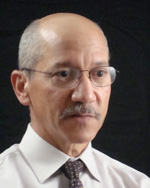 |
Pedro Rojas
Executive Editor, La Opinión
Los Angeles, CA
Out of curiosity Pedro Rojas says he decided to attend the immigration rally in Los Angeles on May 1, 2006. He encountered hundreds of thousands of people, filling the streets of L.A. Only one La Opinión reporter and two photographers s were assigned to attend, but six reporters and four photographers showed up on their own. The newspaper knocked out a pre-printed section and replaced it with the story of the event. Rojas was moved by his staff’s initiative. “It was a testament to what we do,” says Rojas. |
 |
Rob Curley
Senior Editor, Digital, The Las Vegas Sun
Las Vegas, NV
Rob Curley was thrilled when a newspaper reader recognized him early in his career and asked him to talk. But he soon realized what concerned this reader was an issue he had not fully weighed in his concept of how the public engaged with his newspaper. |
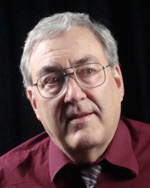 |
Tom Gorman
Senior Editor, Print, The Las Vegas Sun
Las Vegas, NV
Tom Gorman was working at The Los Angeles Times when a melancholy assignment brought home his newspaper’s power. “Journalism touches a lot of people’ lives,” says Gorman, a lesson he re-learned when six teenagers died in an auto crash. |
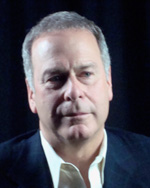 |
Brian Greenspun
Publisher & Editor, The Las Vegas Sun
Las Vegas, NV
Brian Greenspun is reminded of the impact of his newspaper when new business owners come to Las Vegas and invariably visit the publishers of the city’s newspapers. He also sees his newspaper as a means for ordinary citizens to find a platform they might not otherwise attain. “People who have nowhere else to go,” says Greenspun. |
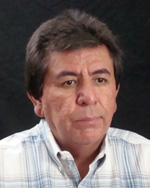 |
Tom Arviso Jr.
Publisher, The Navajo Times & CEO, Navajo Times Publishing Company
Window Rock, AZ
Tom Arviso, Jr. says, “The role of our newspaper was always questioned by our government.” Personal relationships also interfered. When Arviso’s friend, the Navajo Nation President, Albert Hale, misused tribal funds, Arviso had to make a tough call. But the facts his newspaper had verified persuaded him to publish the stories that drove Hale from office. And Arviso learned, “The truth always prevails.” |
 |
Henry M. Lopez
Digital Development Manager & Project Manager, Santa Fe New Mexican
Santa Fe, NM
Henry M. Lopez was writing an obituary for The New Mexican when he was reminded of the power of the press in a grandmother’s kitchen in Santa Fe. |
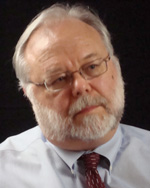 |
Rob Dean
Managing Editor, Santa Fe New Mexican
Santa Fe, NM
Rob Dean used the power of his newspaper to focus public attention on an “achievement gap” in Santa Fe’s schools. The results were a clearer understanding of the issues at stake, a public forum, and some state legislation to begin to address this complicated problem. |
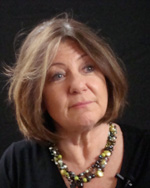 |
Ginny Sohn
Associate Publisher, Santa Fe New Mexican
Santa Fe, NM
Ginny Sohn was reminded of the power of her newspaper when a local Hispanic man came to the defense of his community at a public forum by referencing a letter, written to the newspaper by a high school boy. The lesson that letter conveyed held the day when an out-of-towner started bashing New Mexico. |
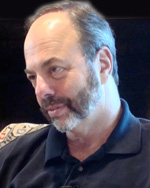 |
Ken Doctor
Author: “Newsonomics: Twelve New Trends That Will Shape the News You Get”
Aptos, CA
Ken Doctor started his career as an editor at a start-up alternative weekly newspaper in Eugene, Ore. His epiphany came when one of his reporters caught a local public official selling his vote on a major highway project and the story got results. |
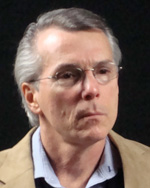 |
Zach Ryall
Online, Managing Editor, Austin American-Statesman
Austin, TX
Zach Ryall, a photojournalist who runs The Austin American-Statesman’s websites, recalls a multi-page spread of photos and enterprise journalism that captured the tragic episode in the life of a Texas woman. The photos and text produced by the newspaper were subsequently used to fight drunk driving. Text and pictures, he says, no other institution would have created. |
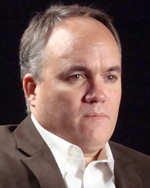 |
Tim Lott
VP Audience Strategy, Austin American-Statesman
Austin, TX
Tim Lott got to see what newspapers do best when he came upon a bizarre, but unforgettable story in small Texas town. He called the impact of his story, “newspaper work at its best.” |
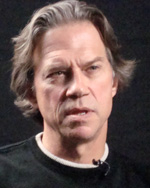 |
Fred Zipp
Editor, Austin American-Statesman
Austin, TX
Fred Zipp was a young reporter in Beaumont, Texas, when he learned a vital lesson: verify, verify, verify -- especially when a story sounds too good. |
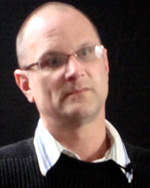 |
Keith Magill
Executive Editor, The Courier
Houma, LA
Keith Magill witnessed the value of news when Katrina struck Louisiana in 2005. When some of his reporters “put their lives on the line” to report the story, he was reminded how much dedication journalism inspires. |
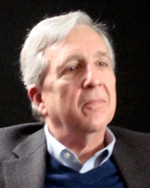 |
Miles Forrest
Publisher, The Courier
Houma, LA
Miles Forrest was working on the business side of his newspaper when he helped a reporter “shine a light” on a community problem. The experience helped shape his understanding of the importance of what his newspaper did. |
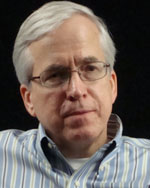 |
Lloyd Gray
Executive Editor, Northeast Mississippi Daily Journal
Tupelo, MS
Lloyd Gray was a capitol correspondent in Jackson for The Sun Herald on the Mississippi Gulf Coast when he saw the newspapers in his state champion the cause for better education for Mississippi’s children in 1982. The reporting was effective, and Gray believes Mississippi’s newspapers motivated a “psychological breakthrough” for a state that had believed it was doomed to be last. |
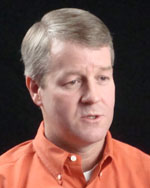 |
Clay Foster
President, CEO & Publisher, Northeast Mississippi Daily Journal
Tupelo, MS
Clay Foster had to man a phone when a snowstorm enveloped his city in January 2011, and subscribers wondered when their newspapers would arrive. But the experience taught him a lesson about the reach and power of his press. |
 |
John Walker
Website Coordinator, The Opelika-Auburn News
Opelika, AL
John Walker learned about the power and purpose of journalism at his college radio station. Tornadoes began popping up all around his community one day and he quickly realized the unique role radio can play when other news media are disabled. |
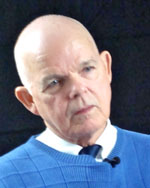 |
Wayne Snow
Managing Editor , The Opelika-Auburn News
Opelika, AL
Wayne Snow was a bureau chief for UPI in Tallahassee when he first felt the chill of breaking a story worldwide. He learned: “You really, really better get it right.” |
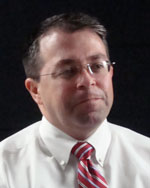 |
James W. (Jim) Rainey
Publisher , The Opelika-Auburn News
Opelika, AL
Jim Rainey was a young reporter in western Tennessee when he discovered the AIDs epidemic had migrated to his small community. His articles shined light on the problem and alerted officials this problem warranted local remedies. |
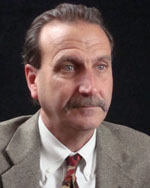 |
Joe DeLuca
Publisher Tampa edition and TampaBay.com, St. Petersburg Times
St. Petersburg, FL
Joe DeLuca was a college kid, working the late shift on the copy desk in Hartford, Conn., when the phone rang, and it woke him up to a metropolitan newspaper’s special place in its community. |
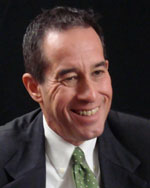 |
Neil Brown
Editor and Vice President, St. Petersburg Times
St. Petersburg, FL
Neil Brown was a young reporter in Miami when a judge and his wife pleaded with him to continue coverage of their neighborhood’s dilemma, and the power of the news media was demonstrated for him. |
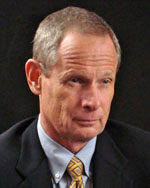 |
Paul Tash
Chairman, CEO and Editor, St. Petersburg Times
St. Petersburg, FL
Paul Tash remembers a day when, “with a match and some kerosene,” a minister’s wife “sparked the interest” of The St. Petersburg Times. That incident led to a story that fully engaged the interest of The Times readership for many weeks thereafter. |
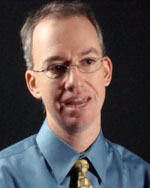 |
Jim Alred
New Media Director, Rome News-Tribune
Rome, GA
Jim Alred had been promoting the value of compelling news video for his newspaper’s website and had been receiving lukewarm interest, until the recording of a local performance by a local woman American Idol finalist grabbed everyone’s attention. |
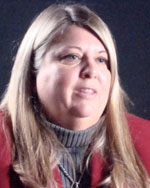 |
Charlotte Atkins
Editor-in-Chief, Rome News-Tribune
Rome, GA
Charlotte Atkins made a decision during a week of sadness in her community to use her newspaper’s agenda-setting power to try to keep her community on an even keel. |
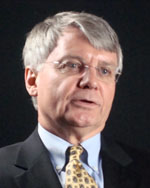 |
Otis Raybon, Jr.
Publisher, Rome News-Tribune
Rome, GA
The power and purpose of journalism became evident to Otis Raybon, Jr., after he wrote a story about a missionary to Peru and saw what happened. |
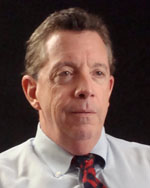 |
Tom Clifford
Director of Digital Media, The Post and Courier
Charleston, SC
Tom Clifford had often heard the classic complaint that newspapers “never print anything that’s good” about young people. When he decided to do just that: it paid off for him. |
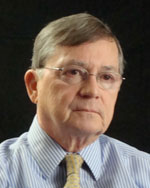 |
William (Bill) Hawkins
Publisher and Executive Editor, The Post and Courier
Charleston, SC
The power and purpose of journalism became evident to Bill Hawkins when he was reporting for his high school newspaper, and those lessons have been reiterated many times during his journalism career. |
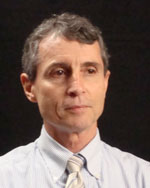 |
Mike Arnholt
Executive Editor, The Fayetteville Observer
Fayetteville, NC
After reading correspondence from the parents of American soldiers whose stories were told in The Observer, Mike Arnholt knew his newspaper was fulfilling its mission. The newspaper had filled a vacuum in the parents’ lives. |
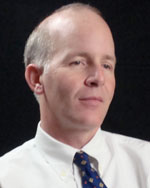 |
Charles Broadwell
Publisher, The Fayetteville Observer
Fayetteville, NC
The power and purpose of journalism was clarified for Charles Broadwell after he undertook a year-long series of oral histories for his newspaper in 1999-2000. “It was year like no other for me,” says Broadwell. |
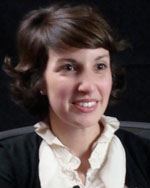 |
Meg Martin
Online Editor, The Roanoke Times
Roanoke, Va.
Meg Martin’s first hands-on day in The Roanoke Times newsroom was April 16, 2007, when tragedy struck, just a few miles away, at Virginian Tech. Based on what she observed among her newspaper colleagues, she learned, “I had come to the right place.” |
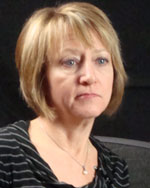 |
Carole Tarrant
Editor, The Roanoke Times
Roanoke, Va.
Carole Tarrant remembers the day tragedy struck at Virginia Tech, and during that fateful week, she tried to make certain the 33 victims who lost their lives were remembered and mourned by the community. |
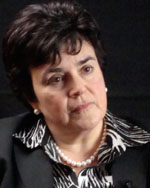 |
Debra C. (Debbie) Meade
President and Publisher, The Roanoke Times
Roanoke, Va.
Debbie Meade says the power and appeal of her newspaper was clarified for her on 9/11 when she was offering free Extra editions of The Times to a public hungry for knowledge. |
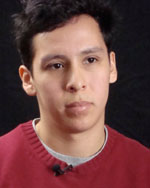 |
William Parschalk
Online Web Editor, The Afro-American
Balimore, Md.
William Parschalk learned in his teenage years how news that “is relevant to people” could move through a community after it has been published. |
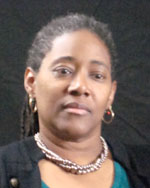 |
Talibah Chikwendu
Executive Editor, The Afro-American
Balimore, Md.
As a young reporter, Talibah Chikwendu wrote a story about an elderly woman having difficulty getting her medical insurance. Afterward, when the woman’s daughter thanked Chikwendu for her report, she understood how journalism could affect people’s lives. |
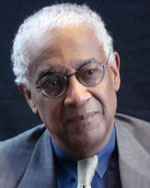 |
John J. Oliver
Chairman of the Board & Publisher, The Afro-American
Balimore, Md.
John J. “Jake” Oliver, Jr. grew up in a newspaper family. As a very young child he didn’t understand why his family’s newspaper was called “The Afro”, until a front-page picture clarified the issue for him. |
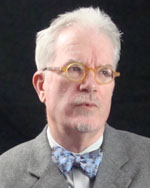 |
Darel La Prade
Senior VP of New Media, Delaware State News
Dover, Del.
Darel La Prade had his journalism epiphany while he was editing a weekly newspaper on the outer banks of North Carolina, and one day a problem walked into his door that his newspaper could help solve. |
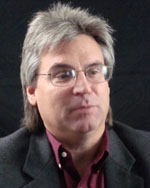 |
Andrew West
Managing Editor, Delaware State News
Dover, Del.
Andrew West learned that when he was asking questions for his newspaper he could validly say: “I represent the public and I want answers.” |
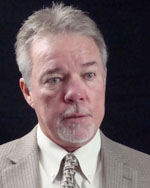 |
Ed Dulin
President and Publisher, Delaware State News
Dover, Del.
Ed Dulin has been with The News since 1970, but he is still impressed by the fact that the newspaper produces a “brand new product every day.” |
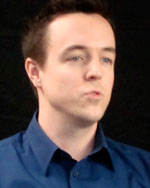 |
Sean Oates
Web Editor , The Record
Woodland Park, N.J.
Sean Oates had his epiphany in the multimedia age when his newspaper documented regional pollution in words, sounds, still pictures and video (“Toxic Legacy Project,” a joint project with The Record and northjersey.com). It “changed the status quo by shedding light” on a problem, says Oates. |
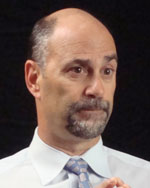 |
Frank Scandale
Editor, The Record
Woodland Park, N.J.
Frank Scandale was a young reporter working at The Daily Journal, Elizabeth, N.J., when he discovered that -- for a reporter -- there is no such thing as a “free lunch.” |
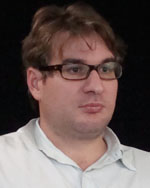 |
Stephen A. Borg
Publisher, North Jersey Media Group
Woodland Park, N.J.
Stephen Borg grew up in a newspaper family. He believes his newspapers make a difference in Northern New Jersey, but he is still baffled by the two-thirds of his community who do not subscribe to The (Bergen) Record. |
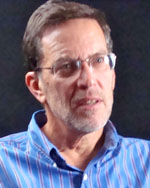 |
Peter Phipps
Managing Editor for New Media, The Providence Journal
Providence, R.I.
Peter Phipps was a young journalist at an Ohio newspaper when he thought he had a great story, but he forgot to ask the one question he needed to nail it. |
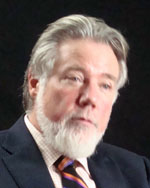 |
Tom Heslin
Sr. VP & Executive Editor, The Providence Journal
Providence, R.I.
Tom Heslin was working for a Maine weekly in his first newspaper job when he learned to look at the people behind the news in order to tell the most compelling story. |
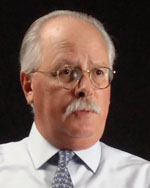 |
Howard Sutton
Publisher, The Providence Journal
Providence, R.I.
Howard Sutton, an employee of the Providence Journal since 1973 is impressed daily by the complex product that his colleagues produce. |
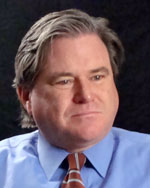 |
Timothy Dwyer
Executive Editor, The Day
New London, Conn.
Timothy Dwyer was a young reporter in Boston when a homeless couple made news and the community responded after their story was told in the newspaper. |
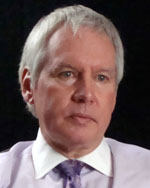 |
Gary Farrugia
Publisher, The Day
New London, Conn.
Gary Farrugia was a news editor at the Philadelphia Inquirer when a senator died in a helicopter crash and the reporting of the accident left an indelible impression on at least one reader. |
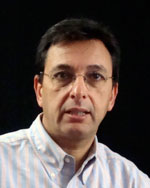 |
Bennie DiNardo
Deputy Managing Editor, Multimedia, The Boston Globe
Boston, Mass.
Bennie DiNardo was a young reporter, still learning his craft, when all the elements of a story came together for him for the first time and he discovered “how journalism works.” |




















































